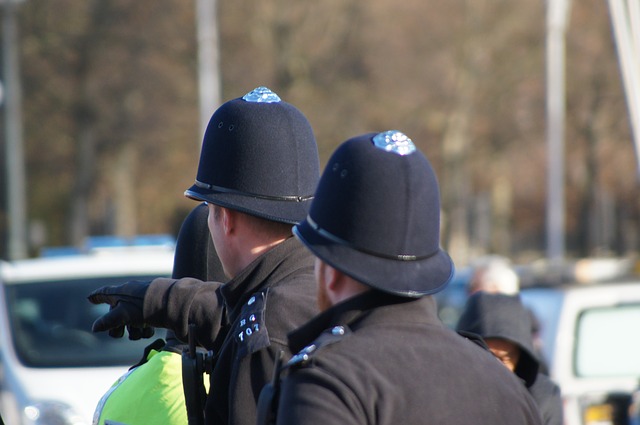Emergency services
Buildings and other features of the built environment such as built infrastructure can present hazardous situations during their construction, operation, special events, maintenance, refurbishment and decommissioning.
It may be appropriate in some of these conditions to develop an emergency plan so that quick and effective action can be taken in the event of an emergency situation arising to ease the severity of that situation and to limit the consequences. An emergency plan establishes agreed, recorded and rehearsed strategies, allowing an effective response. For more information see: Emergency plan.
Amongst other things, it is important to identify on-site and off-site emergency resources that can be called upon if necessary, and estimated response times, based upon distances from fire stations, hospitals, and so on.
On site emergency resources might include:
- Detection and alarm systems.
- Fire extinguishers.
- Spills containment equipment.
- First aid equipment.
- First aiders and other medical or emergency response staff.
Off-site emergency resources will generally include the emergency services. The four main emergency services can be contacted by phoning Emergency Control Centres (ECC) on 999:
- Ambulance service.
- Coastguard.
- Fire and rescue service.
- Police service.
Additional emergency services may also be contacted through Emergency Control Centres on 999:
- Bomb disposal.
- Cave rescue.
- Lifeboat.
- Lowland rescue.
- Mine rescue.
- Moorland search and rescue service.
- Mountain rescue.
- Quicksand search and rescue service.
The 999 number was first introduced in 1937 in central London following a review of a fire on Wimpole Street in 1935 which killed 5 women. It was introduced in other major cities after the Second World War, and by 1976 it covered the whole of the UK. Today the 999 system handles more than half a million calls a week (ref). On receiving a call, the operator will ask ‘Which service do you require”.
In 2009, UK mobile phone networks introduced Emergency Call Roaming so that an emergency call will attempt to use another network if the users network has no signal.
101 can be phoned to contact the Police in non-emergency situations and 111 to contact the NHS in non-life-threatening medical situations. In 1993, 112 was introduced to provide a single number for contacting the emergency services throughout Europe.
As well as emergency response, the emergency services may also:
- Work with local authorities and other agencies such as building control bodies and the Health and Safety Executive (HSE) in relation to issues such as building regulations approvals, licensing, event planning and so on.
- Develop emergency plans.
- Carry out site visits and inspections and advise on safety.
- Carry out investigations following emergencies.
- Undertake enforcement action.
- Undertake promotional and educational activities.
[edit] Related articles on Designing Buildings Wiki
- Alarms.
- Demolition.
- Emergency lighting.
- Emergency plan.
- Emergency signage.
- Evacuating vulnerable and dependent people from buildings in an emergency FB 52
- Fire and rescue service.
- Fire authority.
- Fire marshal.
- Fire.
- First aid.
- Health and safety.
- Health and Safety Executive.
- Health.
- Insurance.
- Licensing.
- Live event production.
Featured articles and news
Key points for construction at a glance with industry reactions.
Functionality, visibility and sustainability
The simpler approach to specification.
Architects, architecture, buildings, and inspiration in film
The close ties between makers and the movies, with our long list of suggested viewing.
SELECT three-point plan for action issued to MSPs
Call for Scottish regulation, green skills and recognition of electrotechnical industry as part of a manifesto for Scottish Parliamentary elections.
UCEM becomes the University of the Built Environment
Major milestone in its 106-year history, follows recent merger with London School of Architecture (LSE).
Professional practical experience for Architects in training
The long process to transform the nature of education and professional practical experience in the Architecture profession following recent reports.
A people-first approach to retrofit
Moving away from the destructive paradigm of fabric-first.
International Electrician Day, 10 June 2025
Celebrating the role of electrical engineers from André-Marie Amperè, today and for the future.
New guide for clients launched at Houses of Parliament
'There has never been a more important time for clients to step up and ...ask the right questions'
The impact of recycled slate tiles
Innovation across the decades.
EPC changes for existing buildings
Changes and their context as the new RdSAP methodology comes into use from 15 June.
Skills England publishes Sector skills needs assessments
Priority areas relating to the built environment highlighted and described in brief.
BSRIA HVAC Market Watch - May 2025 Edition
Heat Pump Market Outlook: Policy, Performance & Refrigerant Trends for 2025–2028.
Committing to EDI in construction with CIOB
Built Environment professional bodies deepen commitment to EDI with two new signatories: CIAT and CICES.
Government Grenfell progress report at a glance
Line by line recomendation overview, with links to more details.
An engaging and lively review of his professional life.
Sustainable heating for listed buildings
A problem that needs to be approached intelligently.
50th Golden anniversary ECA Edmundson apprentice award
Deadline for entries has been extended to Friday 27 June, so don't miss out!
CIAT at the London Festival of Architecture
Designing for Everyone: Breaking Barriers in Inclusive Architecture.
Mixed reactions to apprenticeship and skills reform 2025
A 'welcome shift' for some and a 'backwards step' for others.



























